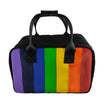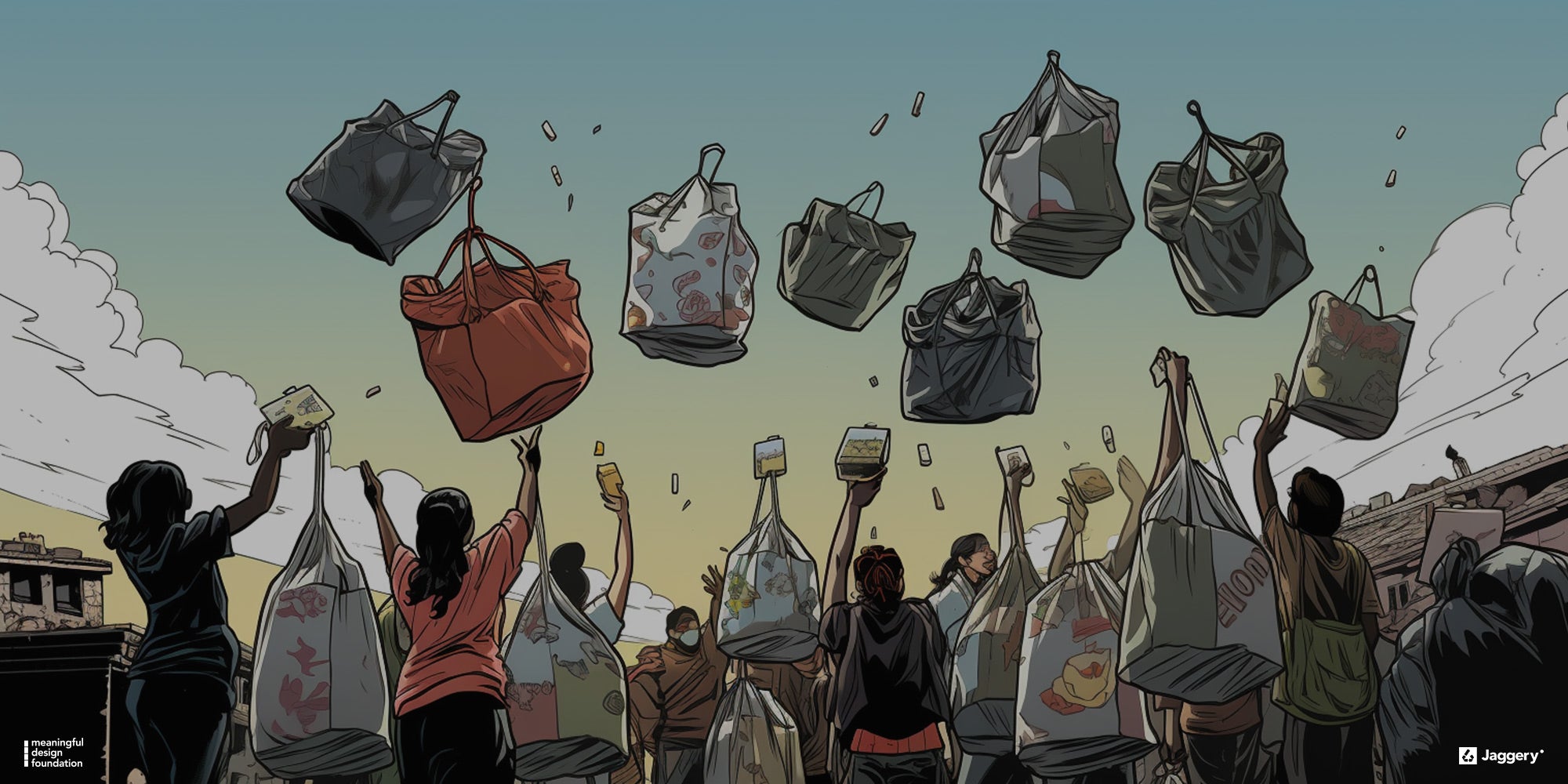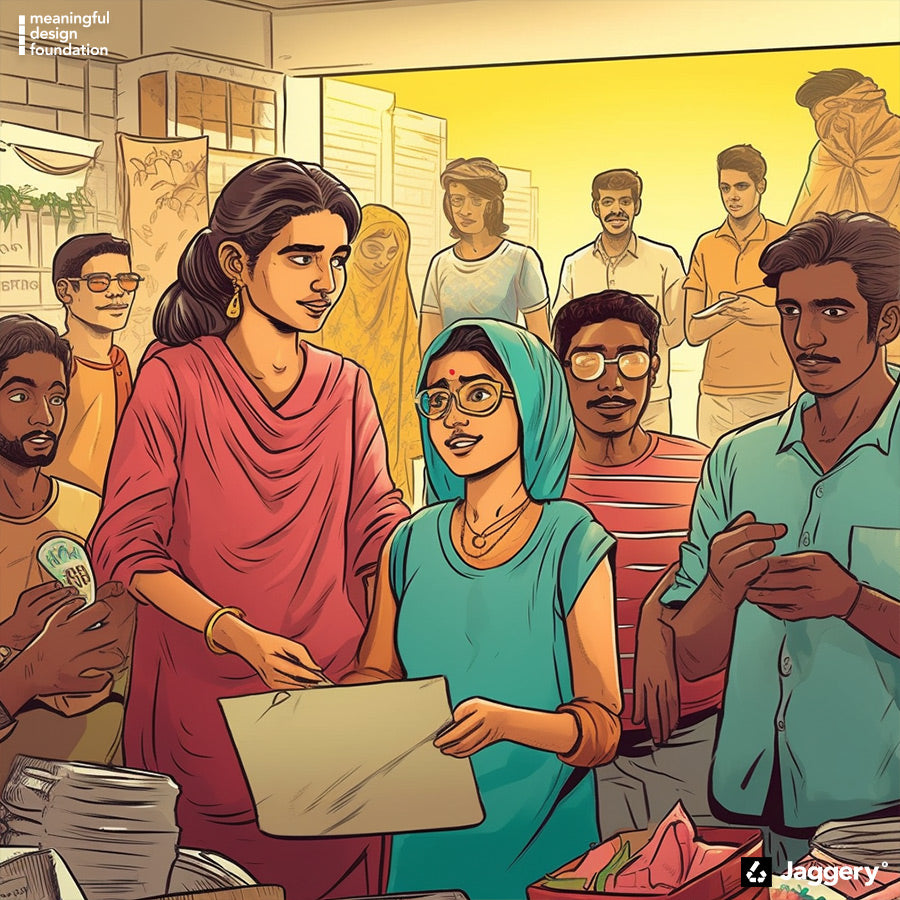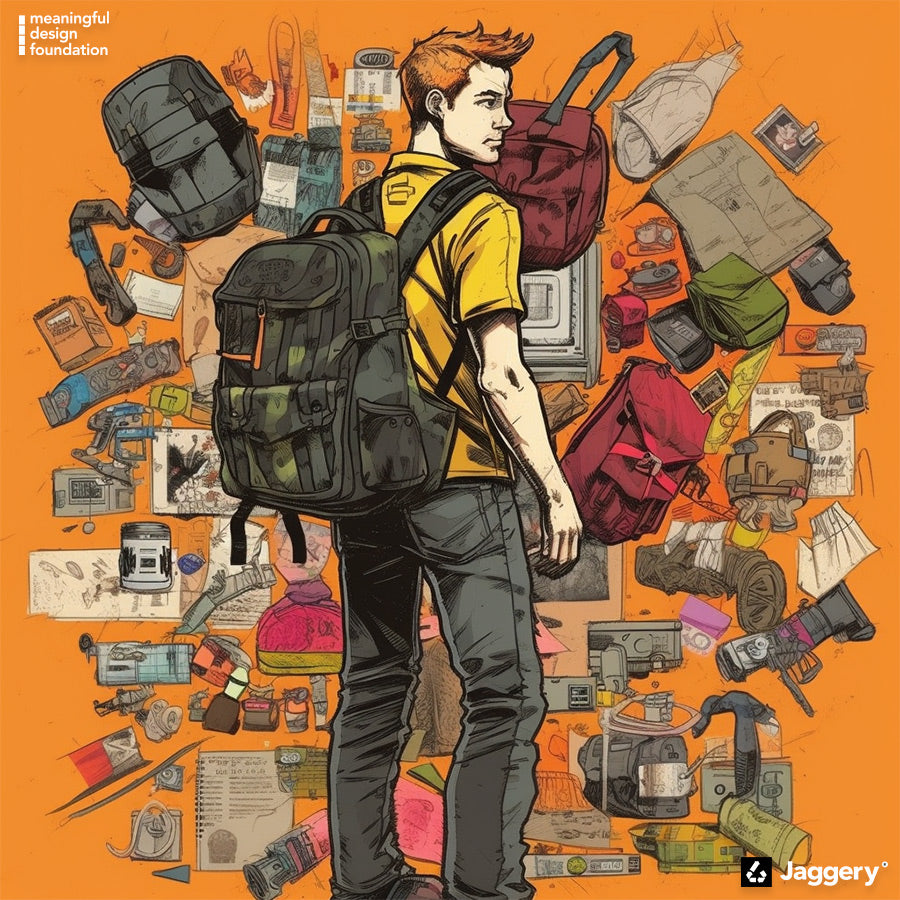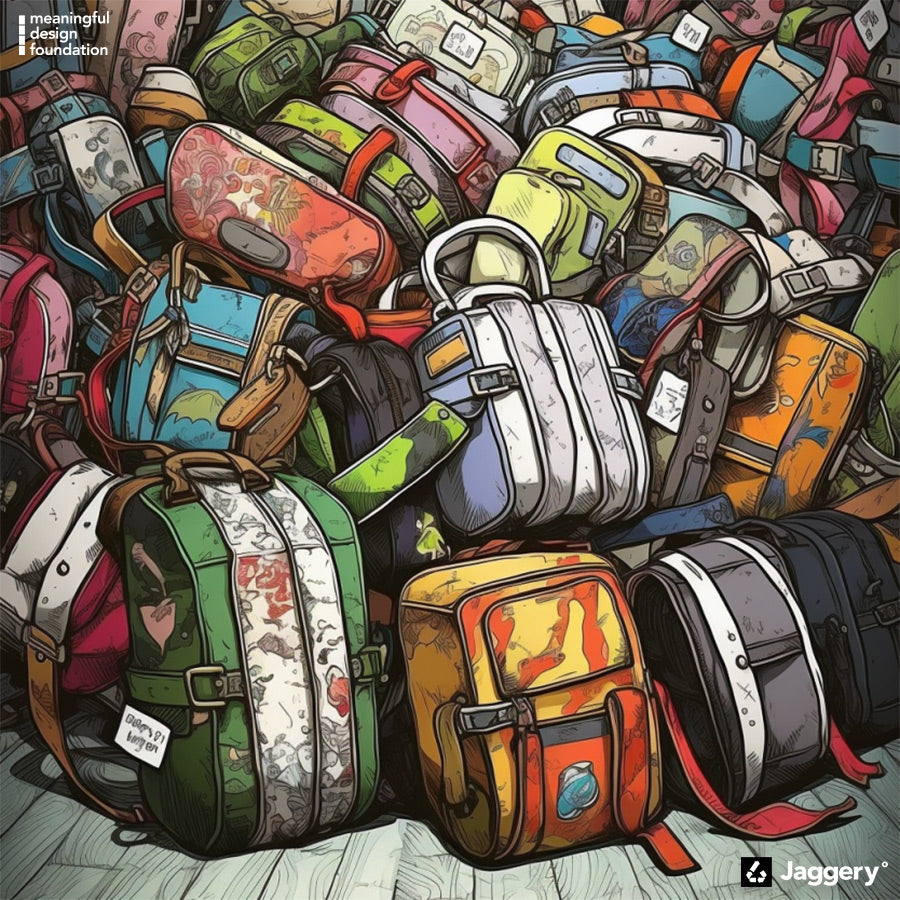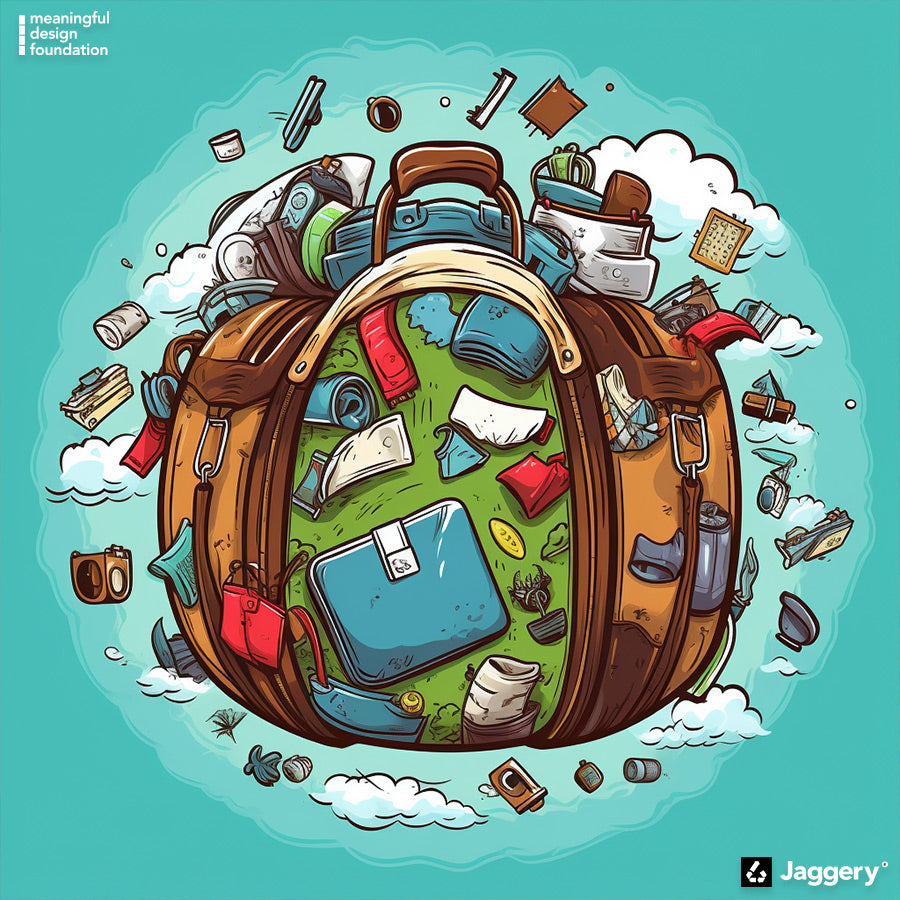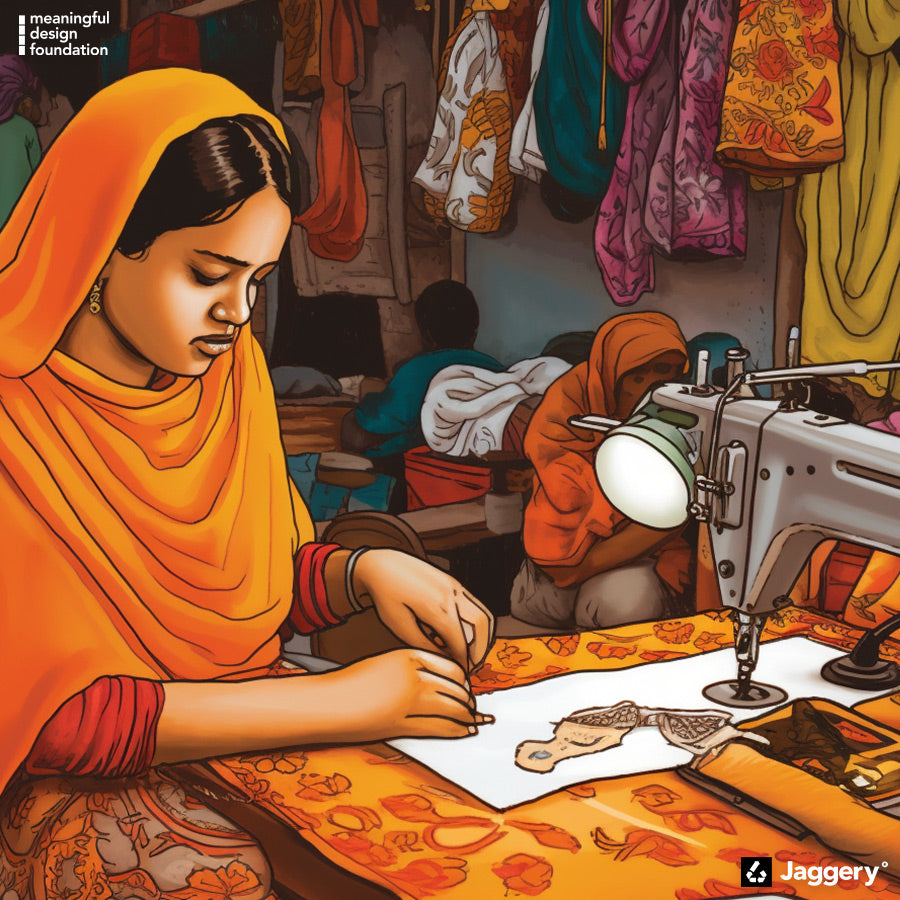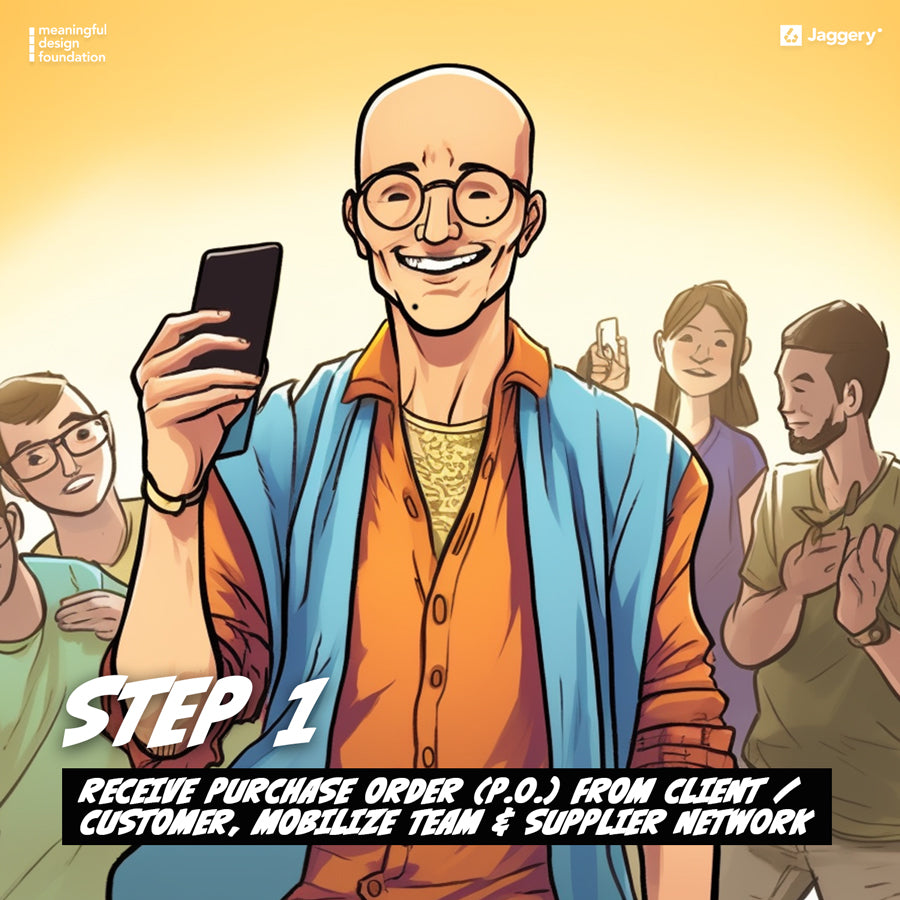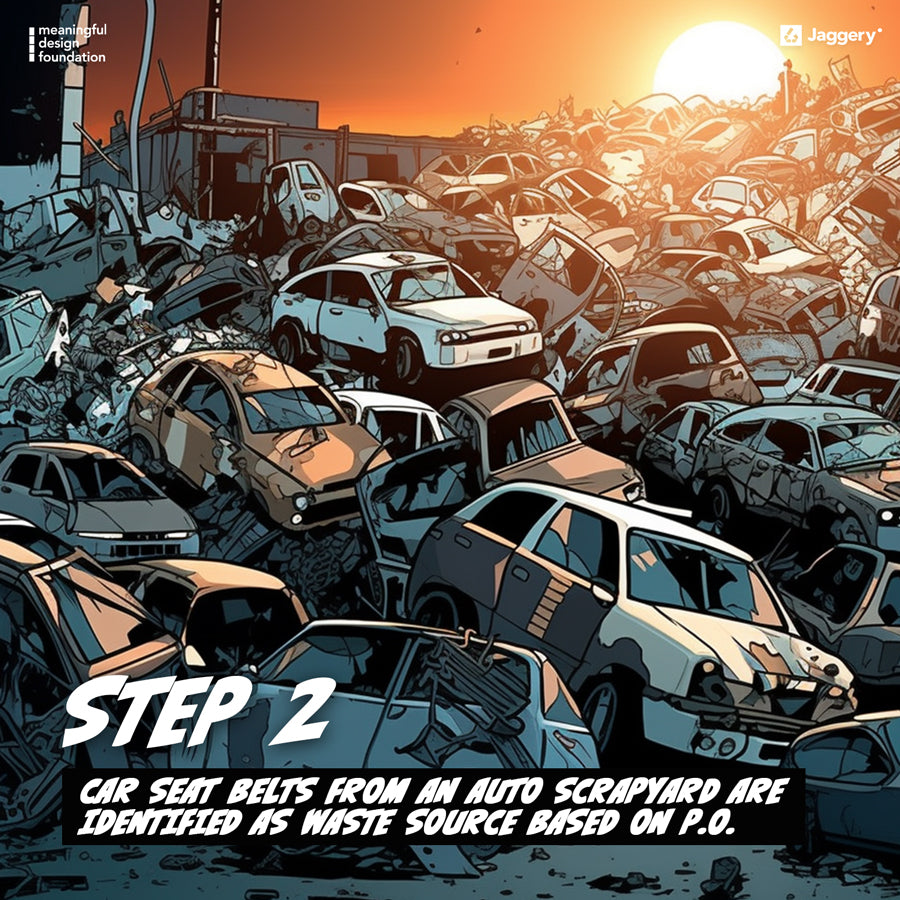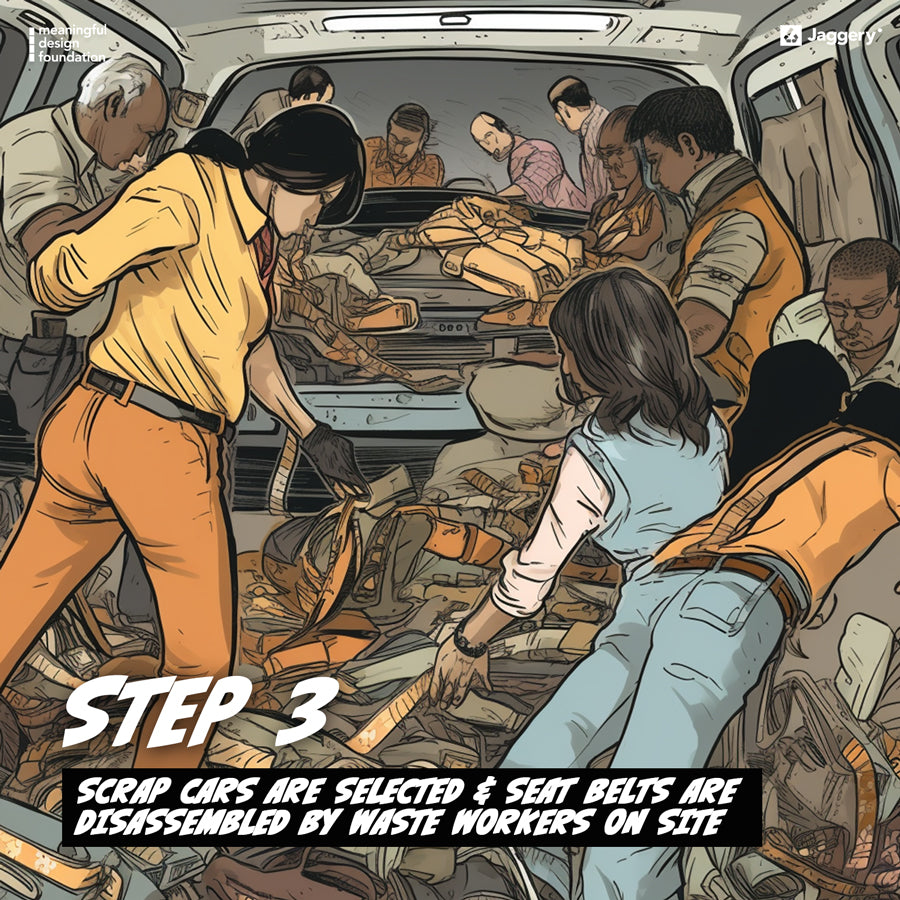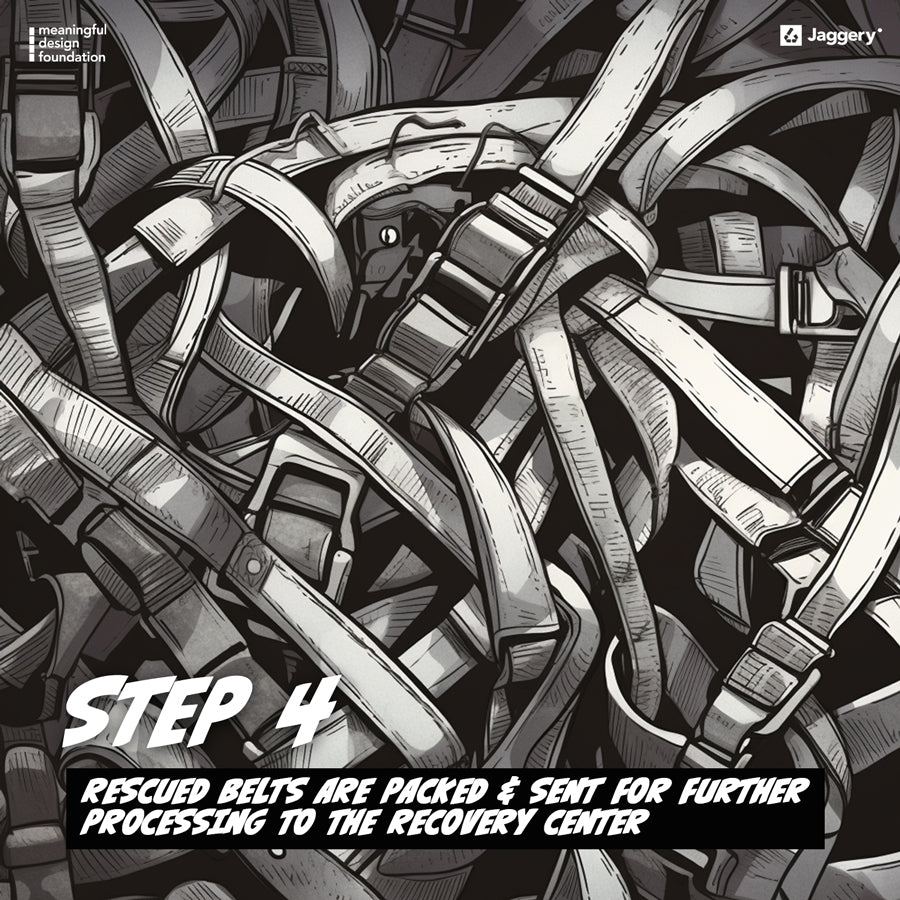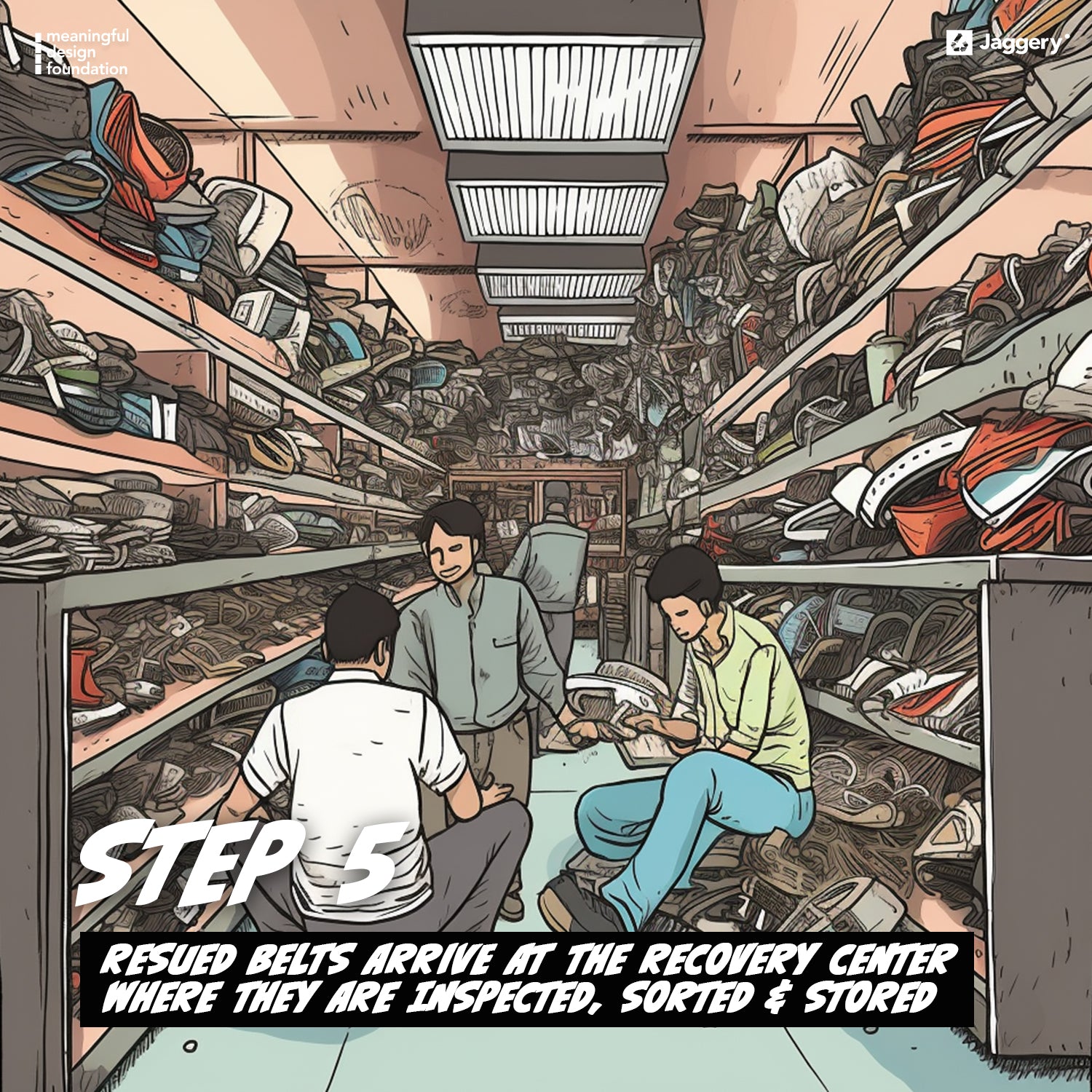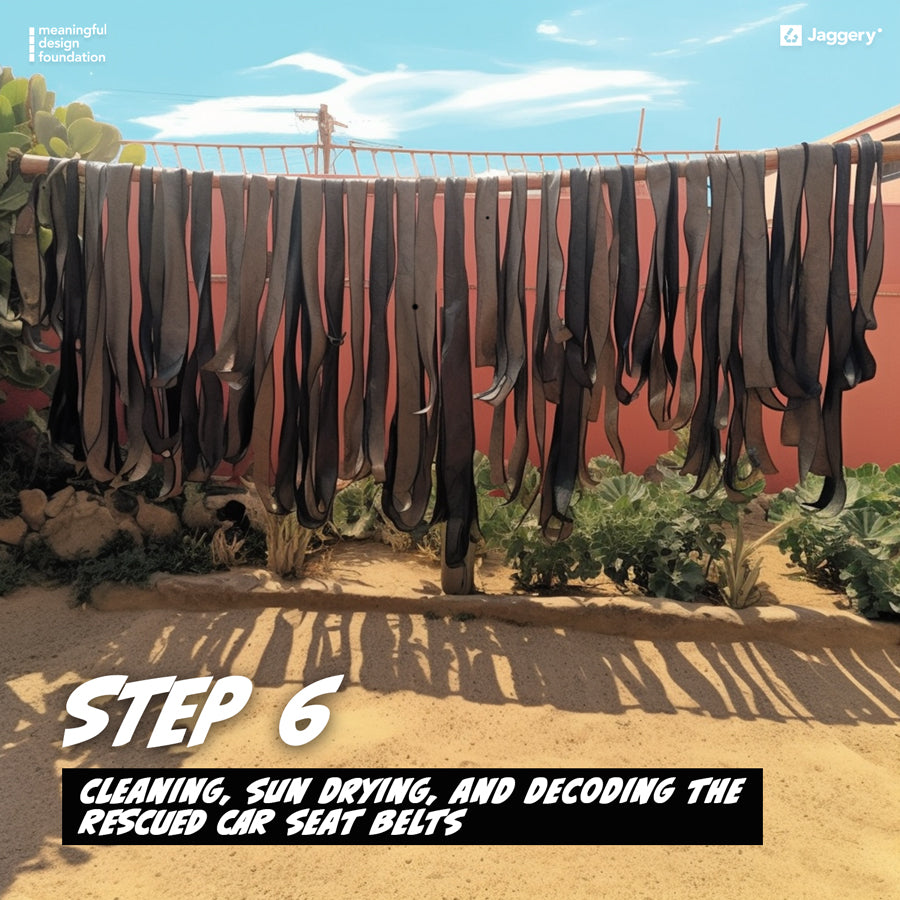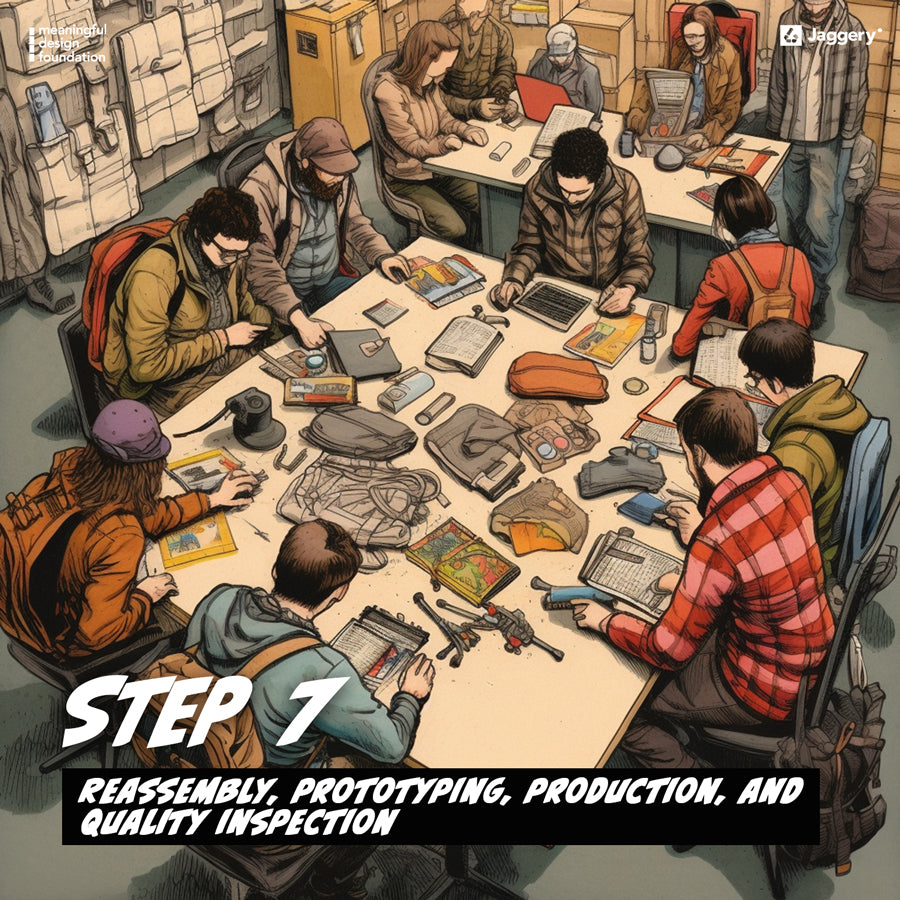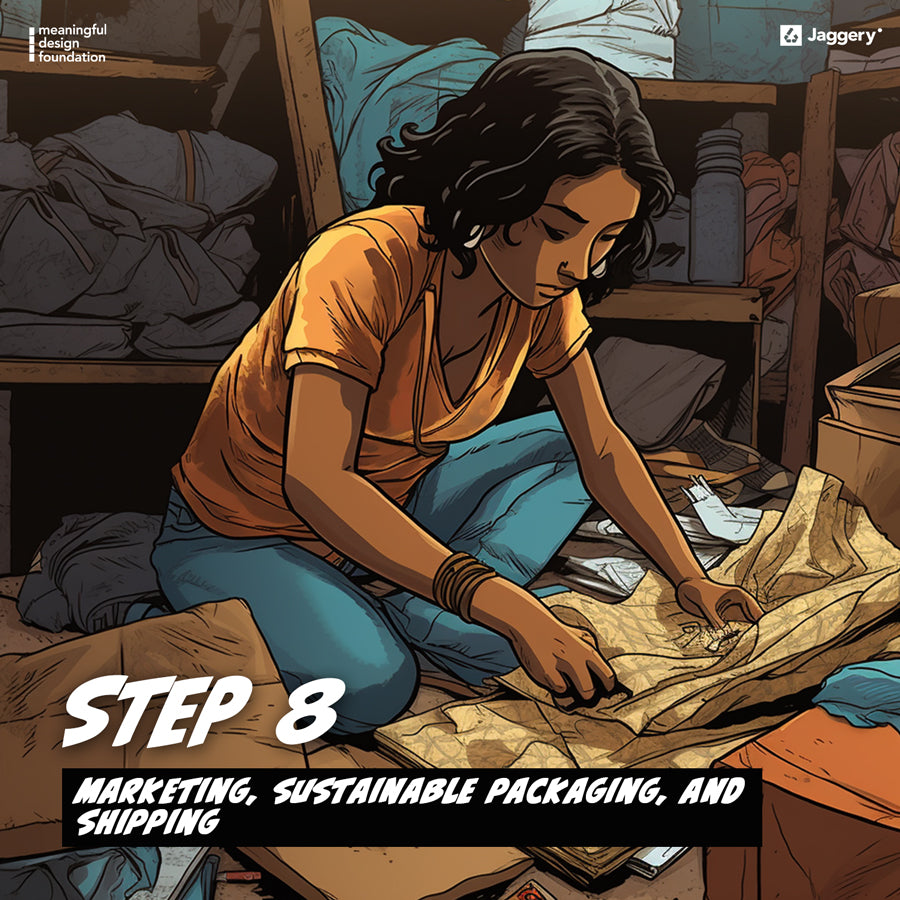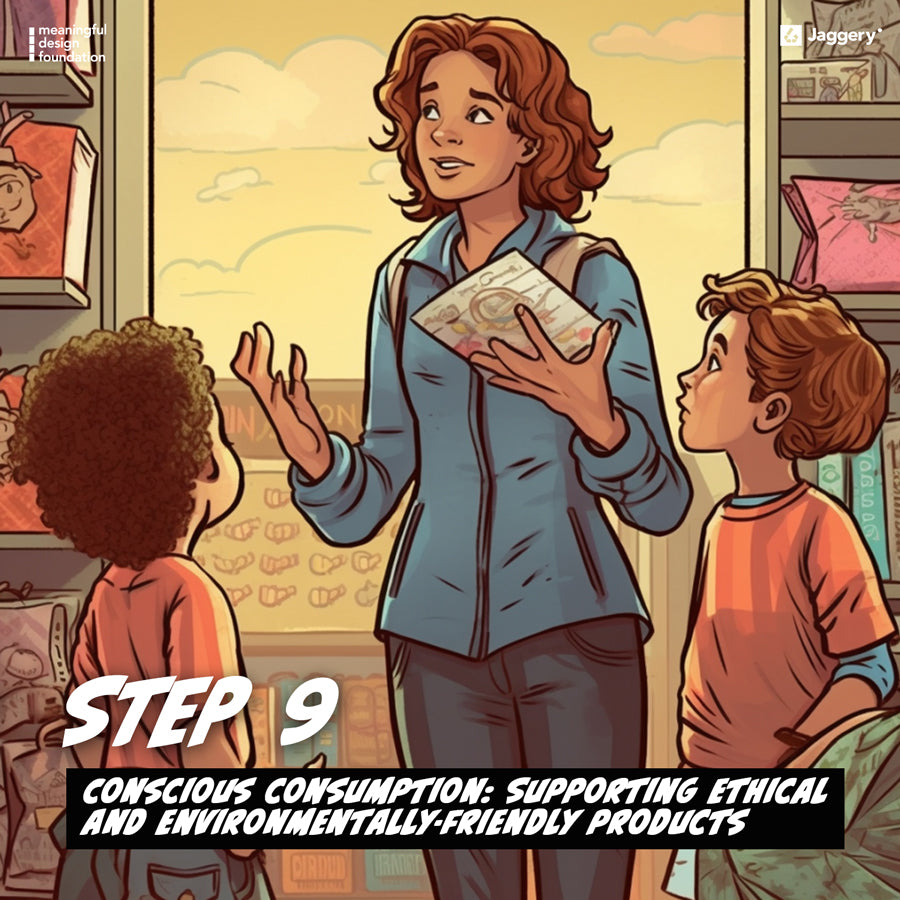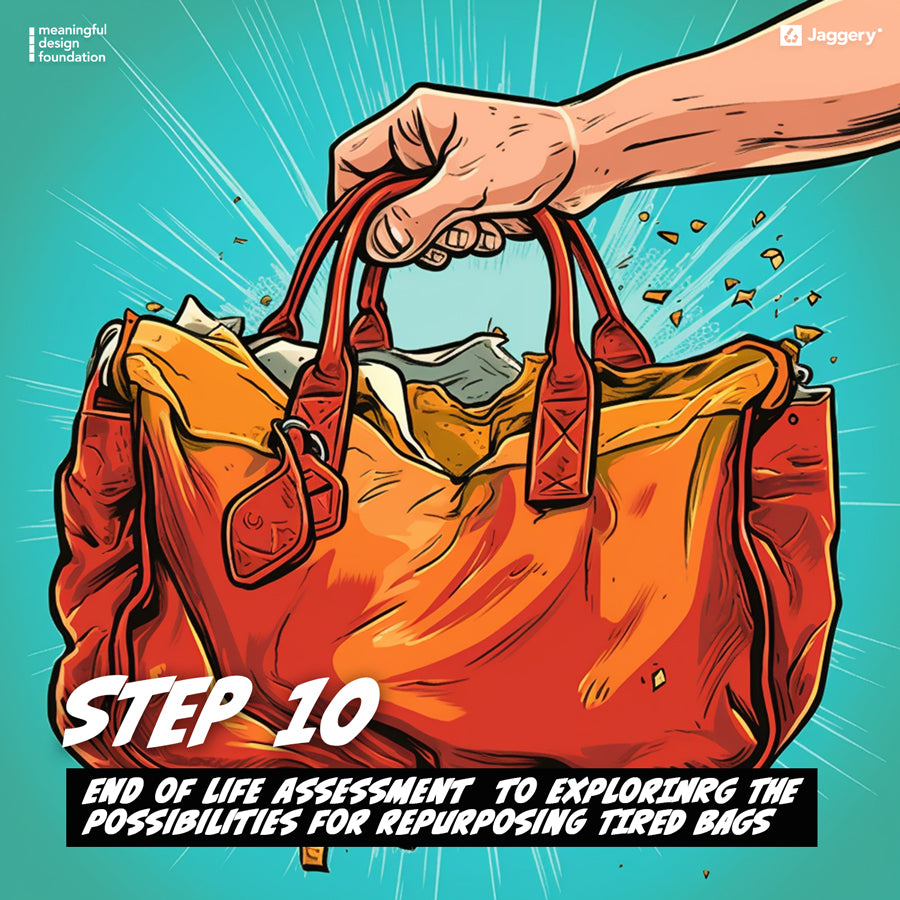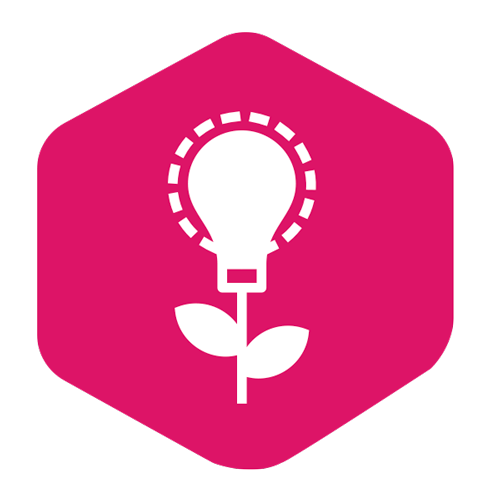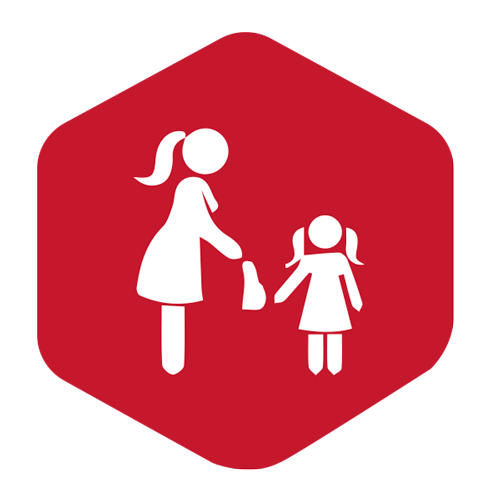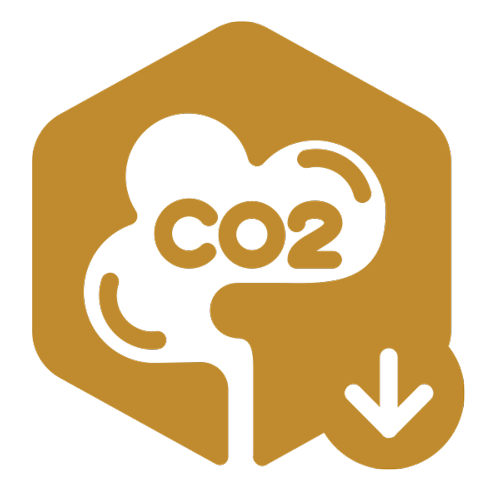Bagtivism is the powerful fusion of fashion and activism, aiming to address social and environmental issues, inspire conscious consumerism, and empower marginalized communities through the creation and promotion of sustainable bags and accessories. It transforms fashion into a catalyst for positive change, enabling individuals to make a statement while contributing to a more sustainable and inclusive future.
Framework
Positive Change through Inclusive Circular Economy
1. Rethink
Encouraging a shift in mindset towards sustainable fashion. Raising awareness about the environmental and social impact of the fashion industry. Educating individuals about the concept of Bagtivism and the power of conscious consumerism.
2. Repurpose
Sourcing discarded materials, such as car seat belts, tyre tubes, and cargo lashing belts, and other industries. Transforming these waste materials into fashionable bags and accessories through innovative design and skilled craftsmanship.
3. Reduce
Promoting conscious consumption by offering durable and timeless products that stand the test of time. Encouraging customers to make thoughtful choices and invest in quality, long-lasting items instead of supporting fast fashion trends
4. Reuse
Embracing the concept of a circular economy by encouraging the reuse of materials. Implementing repair and maintenance services to extend the lifespan of products. Encouraging customers to cherish and care for their bags, reducing the need for constant replacements.
5. Empower
Creating livelihood opportunities for marginalized communities, particularly women and artisans from underserved areas. Collaborating with local artisans, providing them with skills training and fair wages, empowering them to become self-sufficient and financially independent.
6. Inspire
Using storytelling and impactful narratives to inspire and engage a wider audience. Sharing the stories behind each product, highlighting the positive environmental and social impact of conscious fashion choices. Encouraging others to join the Bagtivism movement and become ambassadors for sustainable living.
Through its comprehensive framework, Bagtivism aims to transform sustainable fashion, fostering positive change, and empowering individuals to make a difference through their everyday choices.
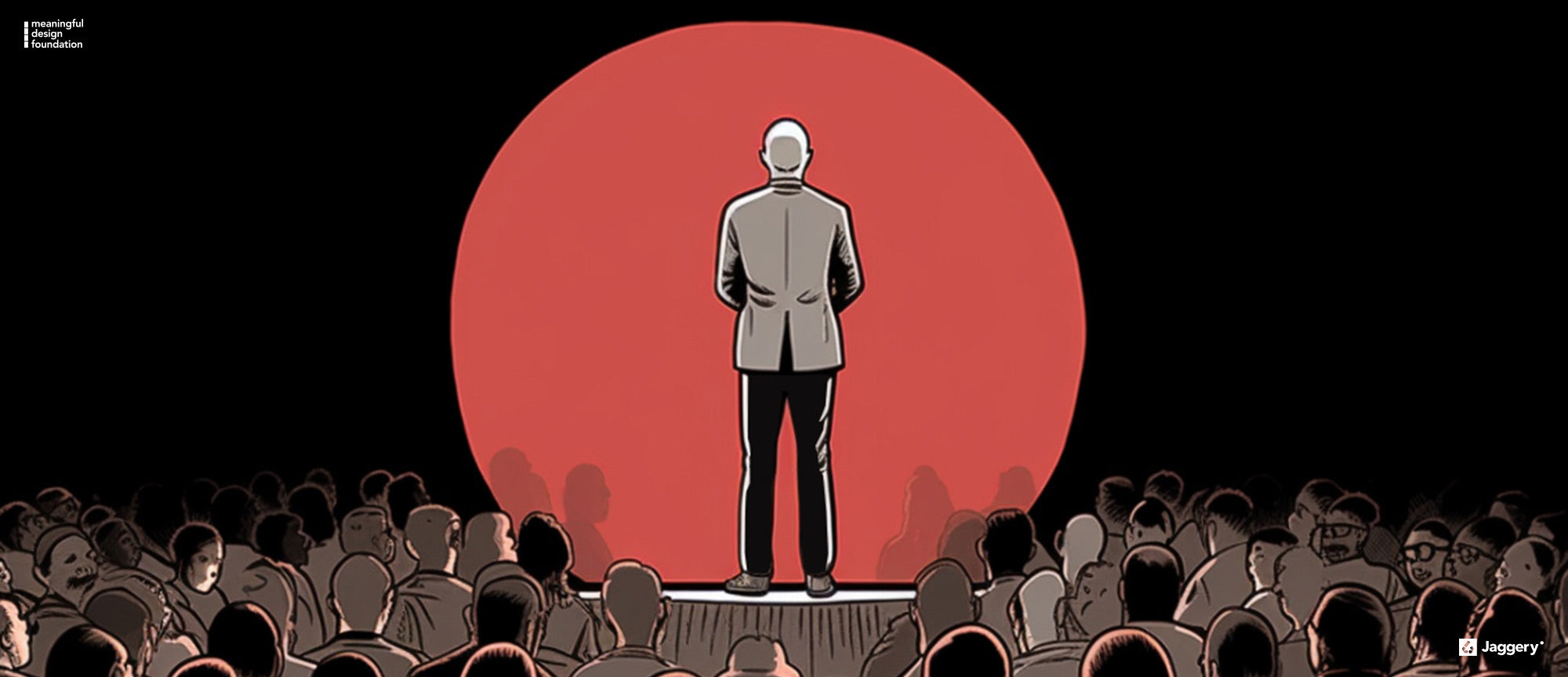
TEDx Talk
Upcycling for an Inclusive Circular Economy
In our TEDx talk "What Happens to Cars After They Die," we discuss the issue of 12 million plus car seat belts that will end up in India's landfills by 2025, creating an urgent need for innovative climate solutions. By rescuing these seat belts from auto scrap yards and turning them into stylish and durable products like bags, home decor items and adventure gear, social enterprises like Jaggery: Reimagining Waste can truly help revolutionize India's circular economy. Through our “Bagtivism” framework, we can open "Upcycling Centers" across the country, divert thousands of metric tons of waste from our landfills, create jobs for tens of thousands of underserved communities in India, and empower them to contribute to a more resilient future. We are humbled by the positive response our talk has received so far, and we’re excited to continue working towards creating a more sustainable and inclusive future.
Materials
Our Essential Value Chains
By transforming industrial waste and surplus materials into valuable bag art, Jaggery is helping advance circular solutions from the Global South, mitigating environmental pollution, and creating jobs for the underserved communities of India.
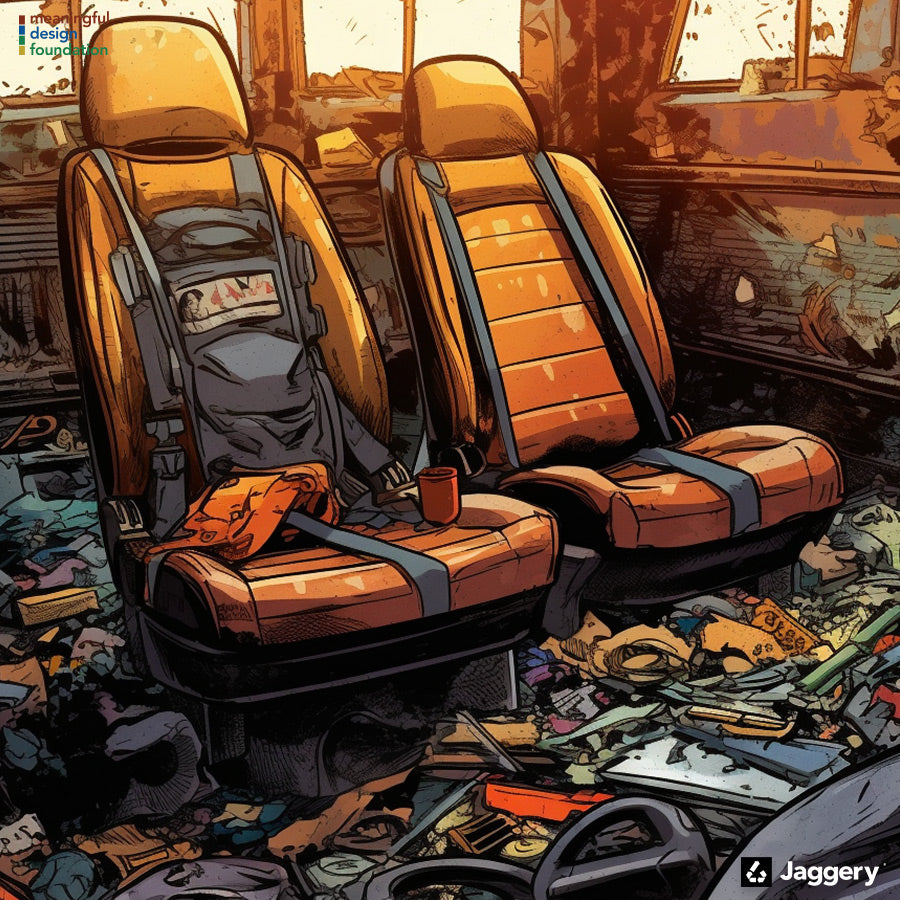
Car Seat Belts
India’s vehicle scrappage policy came into effect in 2021 to phase out Motor Vehicles with an end-of-life vehicle (ELV) older than 15-20 years to reduce pollution. Currently most of the metal from these ELVs is recycled and reused while about 7800 tonnes of plastic remains unused*. Therefore the discarded seat belts and other plastic waste is ending up in scrapyards, landfills, or getting incinerated. By 2025 the ELV numbers would be nearly 3 million. This will result in 12 million car seat belts reaching Indi’s landfills.With already saturated collection centers and landfills, Jaggery rescues material from the incinerator by carefully selecting end-of-life car seat belts and buckles that are rescued from auto scrap yards to create sustainable, well-designed products which are stylish, durable, easy to clean, and weatherproof.
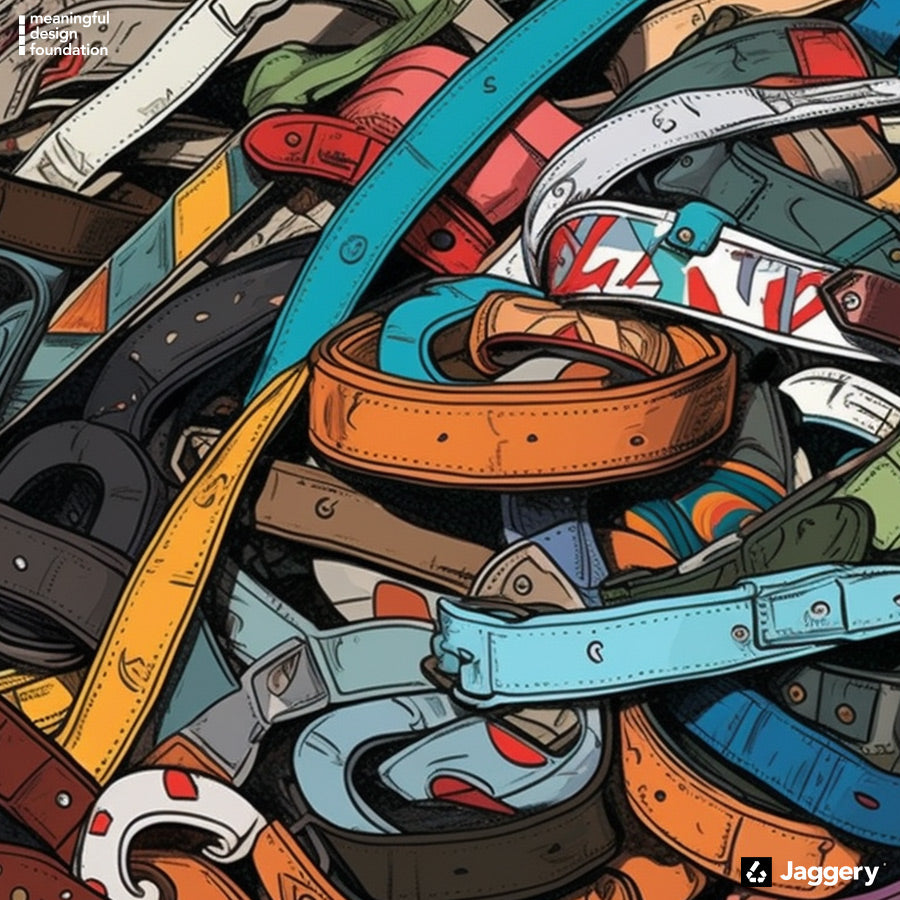
Cargo Lashing Belts
Every year across the globe more than 52 billion tonnes of cargo are shipped by air as stated by the The International Air Transport Association (IATA)*. Lashing belts are used to lift, secure containers and other objects from tipping, horizontal movement and bouncing during the air journey. But once the belts have reached their end of life they are treated as industrial waste and end up in landfills. An accurate quantity or number for such belts is unavailable for India. Jaggery procures these decommissioned lashing belts that have been decoupled from metal parts and hand crafts them into products that are stylish and durable.
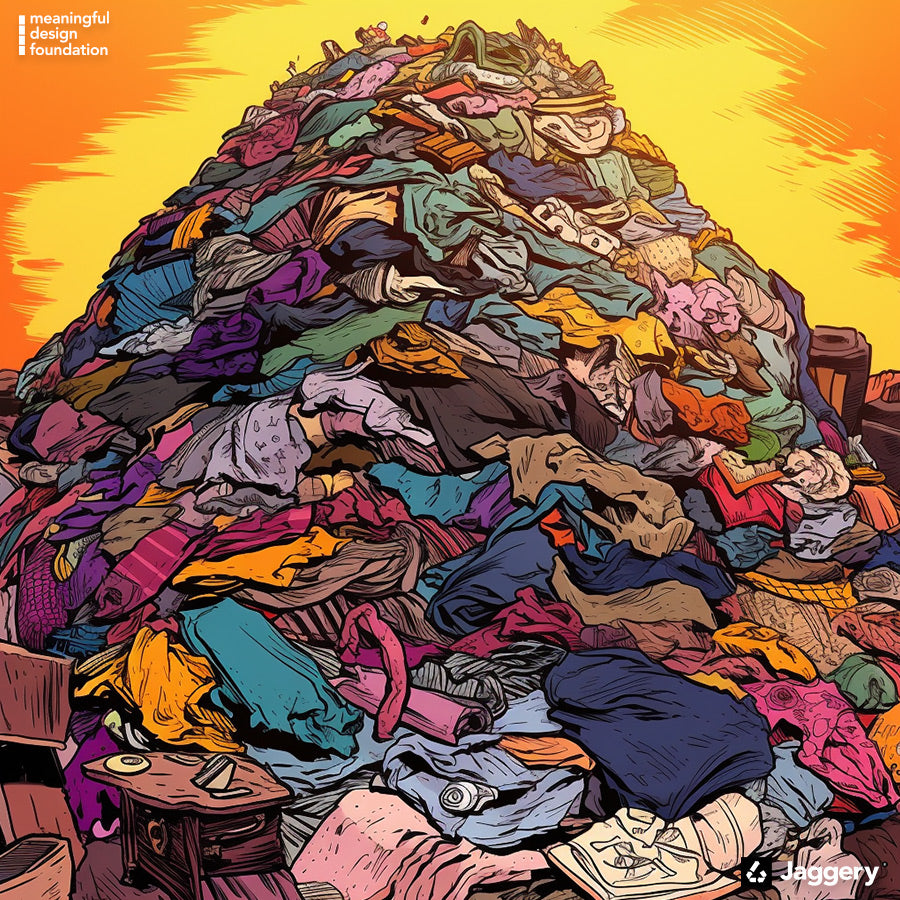
Textile Waste
Textile waste can be a major source of environmental pollution. When it is not properly disposed of, it can end up in landfills, where it can release harmful chemicals into the environment. Textile waste can also contribute to climate change, as it releases methane, a greenhouse gas, when it decomposes.
Here are some stats on the textile waste generated in India:
- India generates around 7793 kilotonnes of textile waste annually.
- This accounts for 8.5% of the global textile waste.
- The majority of textile waste in India is generated by consumers (51%).
- Factory waste and offcuts account for 42% of textile waste.
- Imported waste contributes a further 7%.
Jaggery utilizes textile waste to reduce environmental pollution by upcycling it to make bags, home décor items, and other products. Upcycling textile waste is a great way to reduce waste and give old materials a new life.
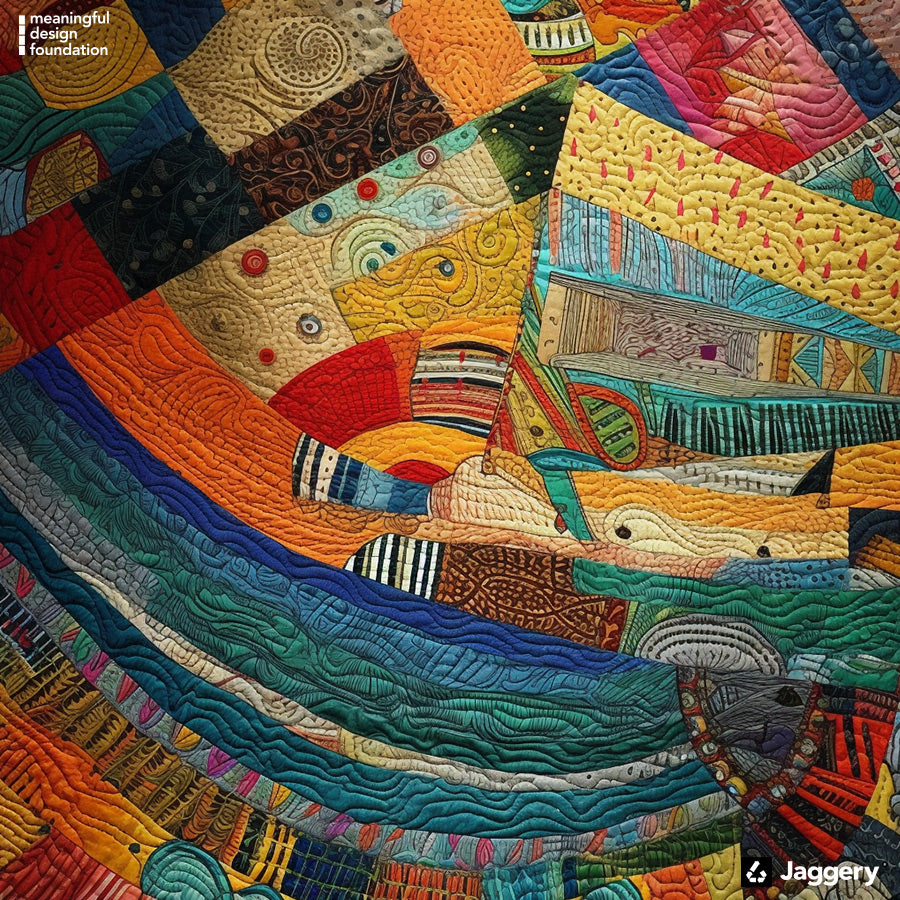
Kantha Quilts
Kantha quilting is a traditional Indian textile art form that has been practiced for centuries. It is typically made by stitching together layers of old sarees and other textile waste using a simple running stitch called the kantha stitch. The kantha stitch is what gives kantha quilts their distinctive wavy, textured appearance.
Kantha quilts are often made by women in rural communities as a way to earn income and to preserve their traditional culture. They are often given as gifts to family and friends, and they are also used as bedding, blankets, and prayer rugs. For our Punarprayog Collection, we create kantha quilt bags that are a great way to upcycle old kantha quilts. They are also a wonderful way to add a touch of Indian craftsmanship to our collections.
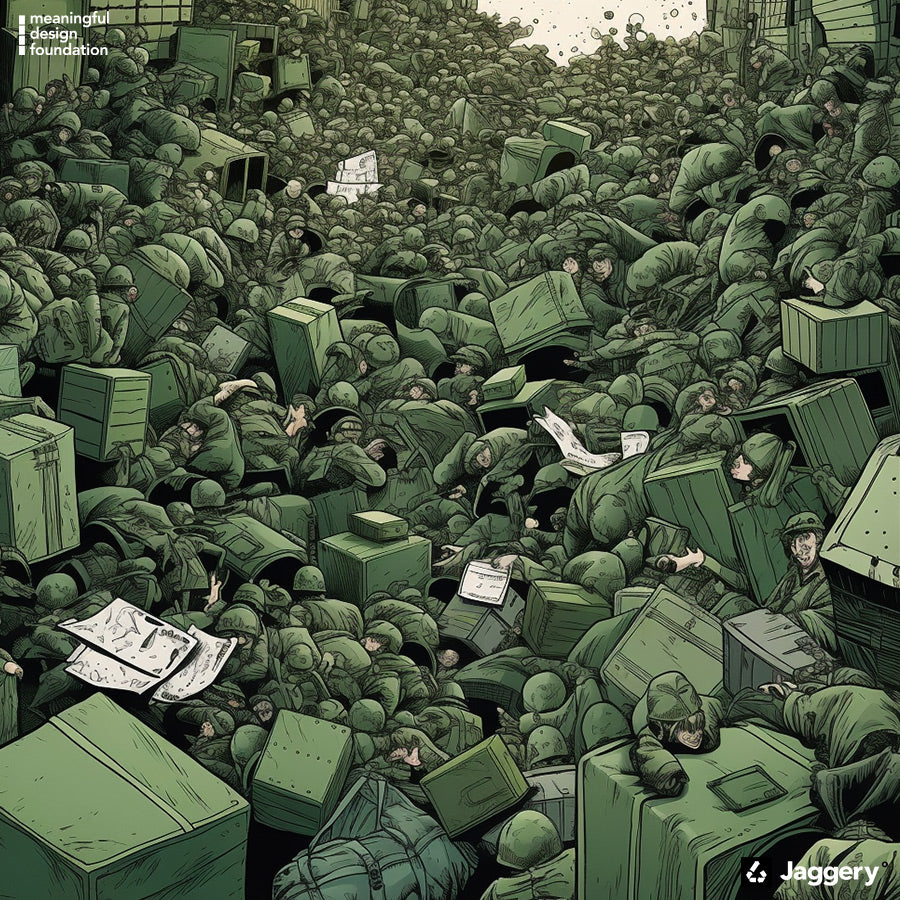
Army Canvas
- The Indian army discards or decommissions an estimated 100,000 to 150,000 meters of canvas per year.
- This canvas is typically made from cotton or poly viscose and is used to make a variety of items, including tents, tarpaulins, and backpacks.
- The army's canvas is often discarded because it is damaged, worn out, or no longer needed.
The Indian army is working to reduce the amount of canvas it discards or decommissions. The army is also working to recycle more of its canvas.
By using decommissioned army canvas in our bags, we are helping reduce waste and support the Indian army's efforts to be more sustainable.
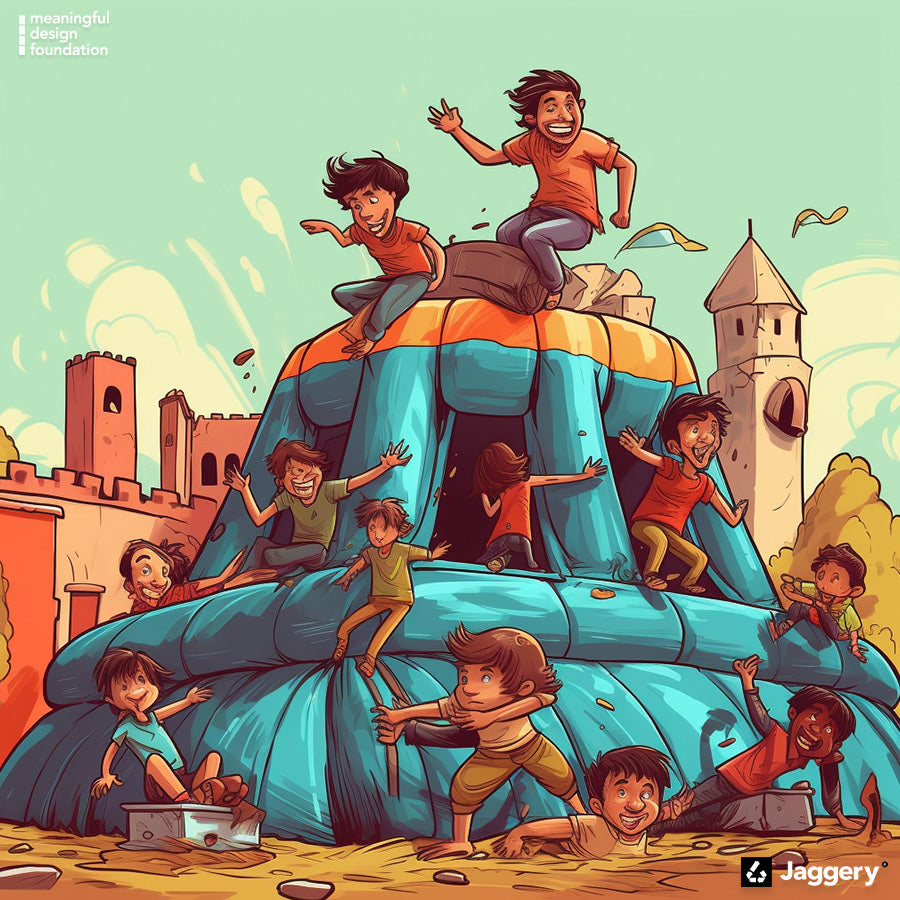
Bouncy Castle
India is the world's largest manufacturer of bouncy castles. The Indian bouncy castle industry is worth an estimated $1 billion annually.
- Around 10 million bouncy castles are made in India each year.
- Of these, around 2 million are discarded after they are worn out.
The discarded bouncy castles in India are a major environmental problem. They are often dumped in landfills, where they can release harmful chemicals into the environment. They can also contribute to climate change, as they release methane, a greenhouse gas, when they decompose.By upcycling discarded bouncy castles into bags, home decor items and camping furniture, Jaggery is able help to reduce environmental pollution and protect our planet.
Process
Design Out of Waste
Have you ever wondered what happens to all the waste around us? There's a lot of it, and it's not going anywhere anytime soon. But what if we could turn that waste into something valuable? That's where the Circular Economy principle of Design Out of Waste comes under focus! At Jaggery, we follow this process to create eco-friendly and sustainable bags out of waste materials. Let's take a look at the steps below that are involved in our car seat belt value chain.
FAQ
Have a question ? We are here to help.


How are your products made sustainable?
Our products are made sustainable through upcycling and repurposing materials, embracing circular economy principles, and supporting fair trade practices, ensuring minimal environmental impact and positive social change.
How are your products good for me?
Our products are ethically crafted, sustainable, and of high quality, providing you with unique low carbon footprint choices for your lifestyle needs. By supporting our cause you will reduce waste from entering our landfills and help create employment opportunities for the disadvantaged communities.
How do you calculate the environmental impact of your products?
We calculate our environmental impact through a comprehensive life cycle assessment, considering factors such as raw material sourcing, manufacturing processes, transportation, and end-of-life considerations, to measure carbon emissions, resource consumption, and waste generation.
How do you measure the social impact of your products?
We assess our social impact through a rigorous evaluation that encompasses various aspects, including the livelihoods and well-being of artisans, gender equality and empowerment, community development, and support for marginalized groups. We utilize impact measurement frameworks and collaborate with partners to gather data and track the positive social outcomes generated by our products.
Where can I find your products?
You can find our products on our website and select retail partners who share our commitment to sustainability and ethical practices.
I have a question, how can I contact you?
For any questions or inquiries, please reach out to our customer support team via email or through the contact form on our website, and we will be happy to assist you promptly.


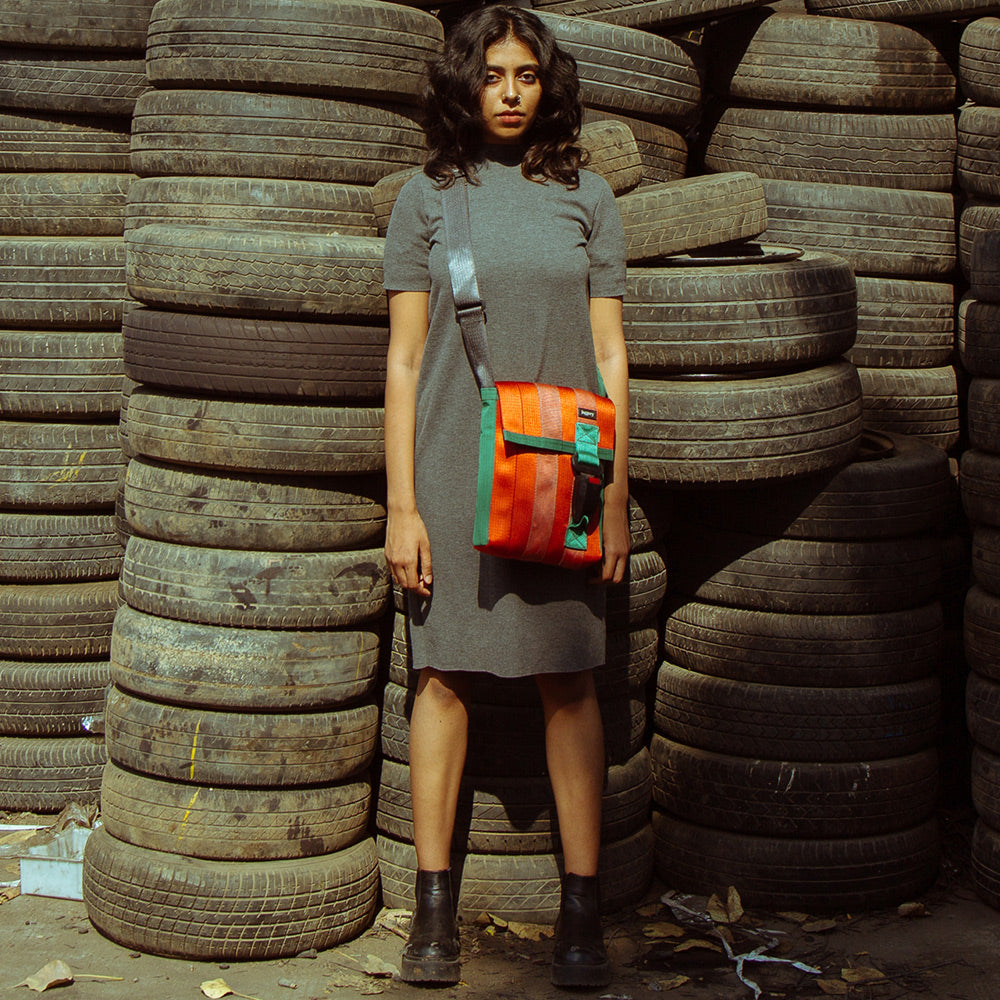
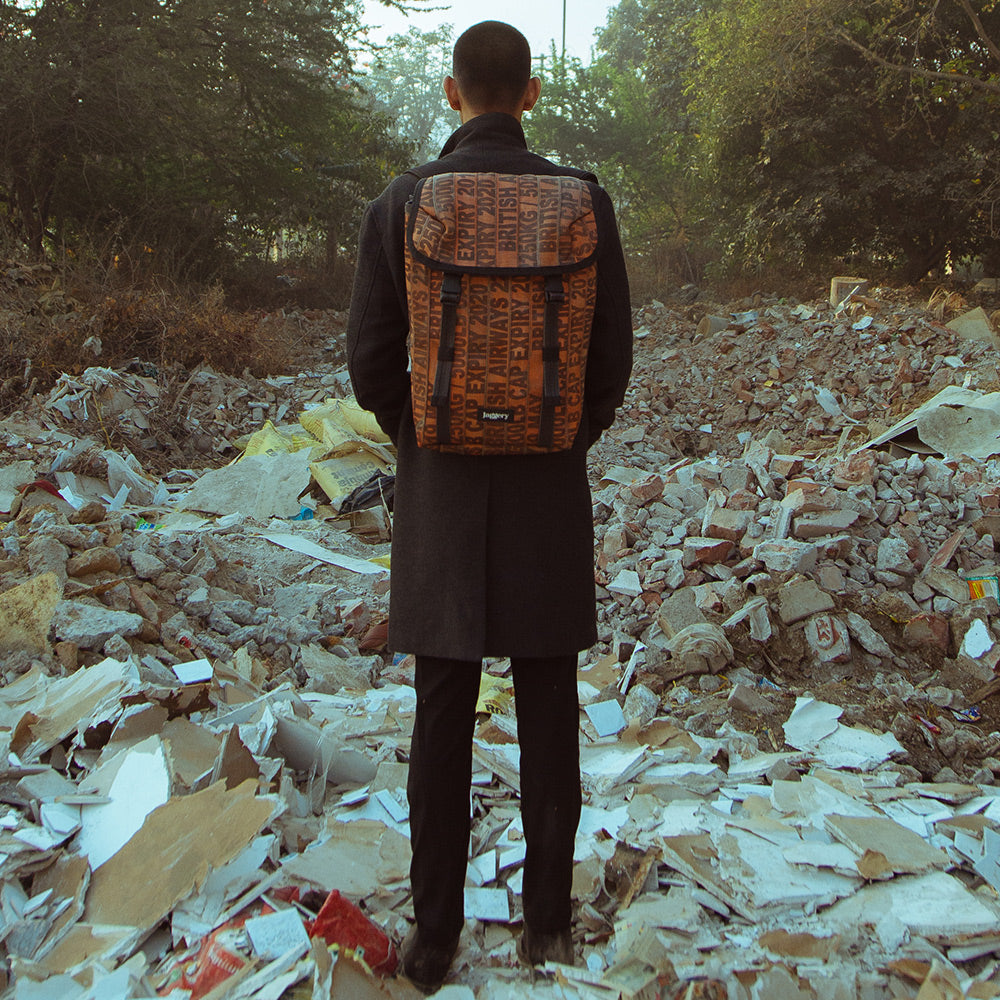
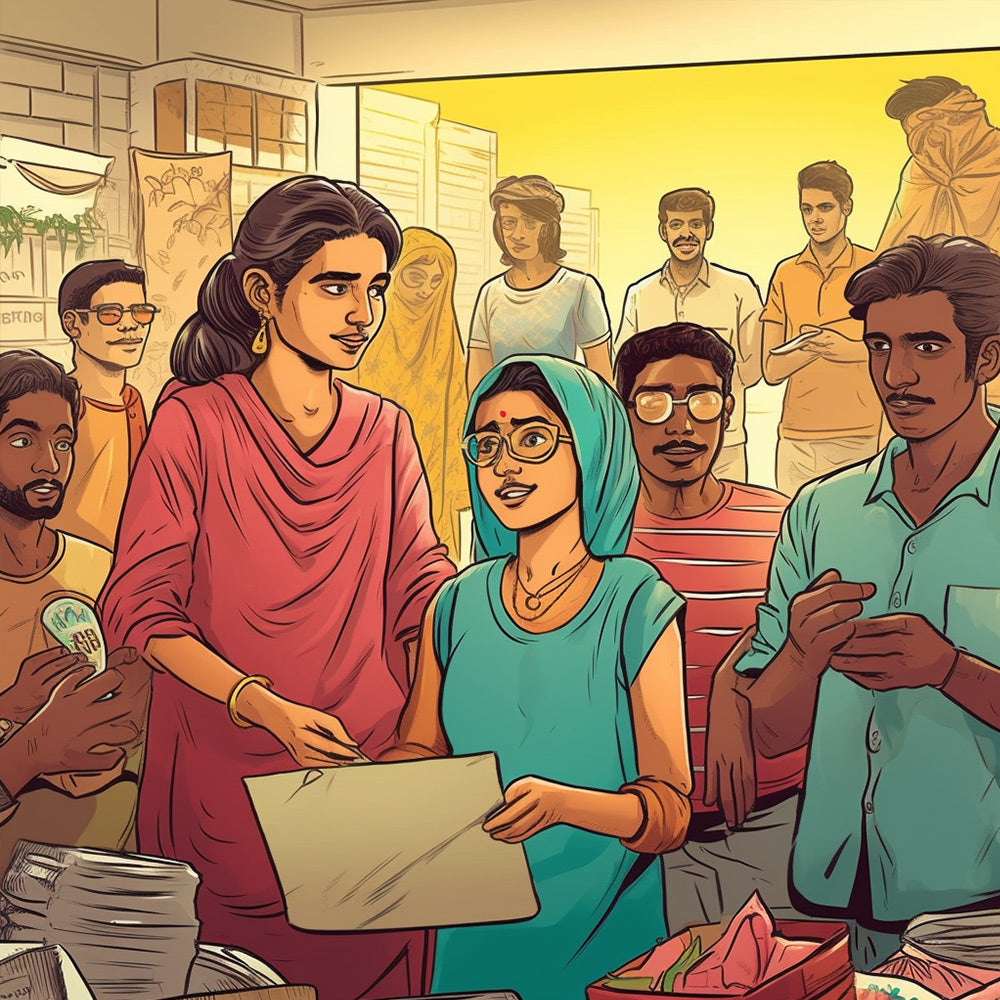

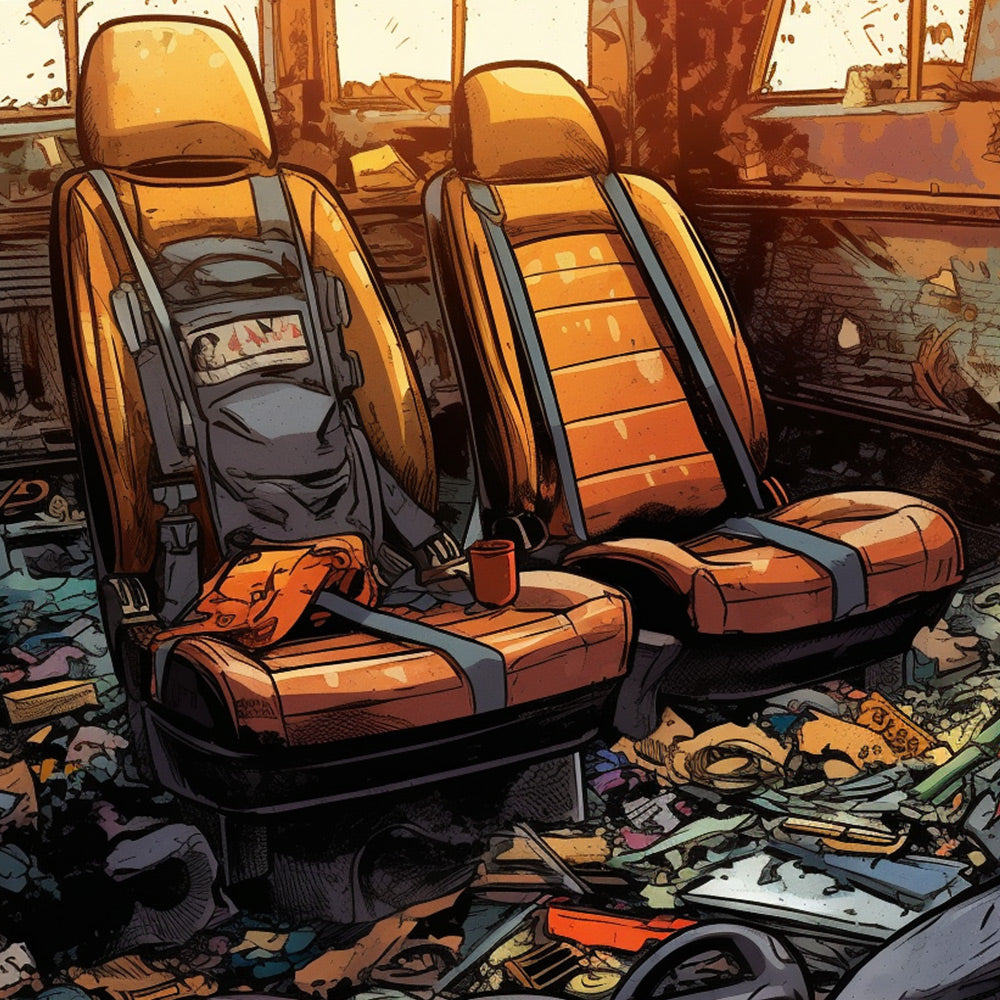
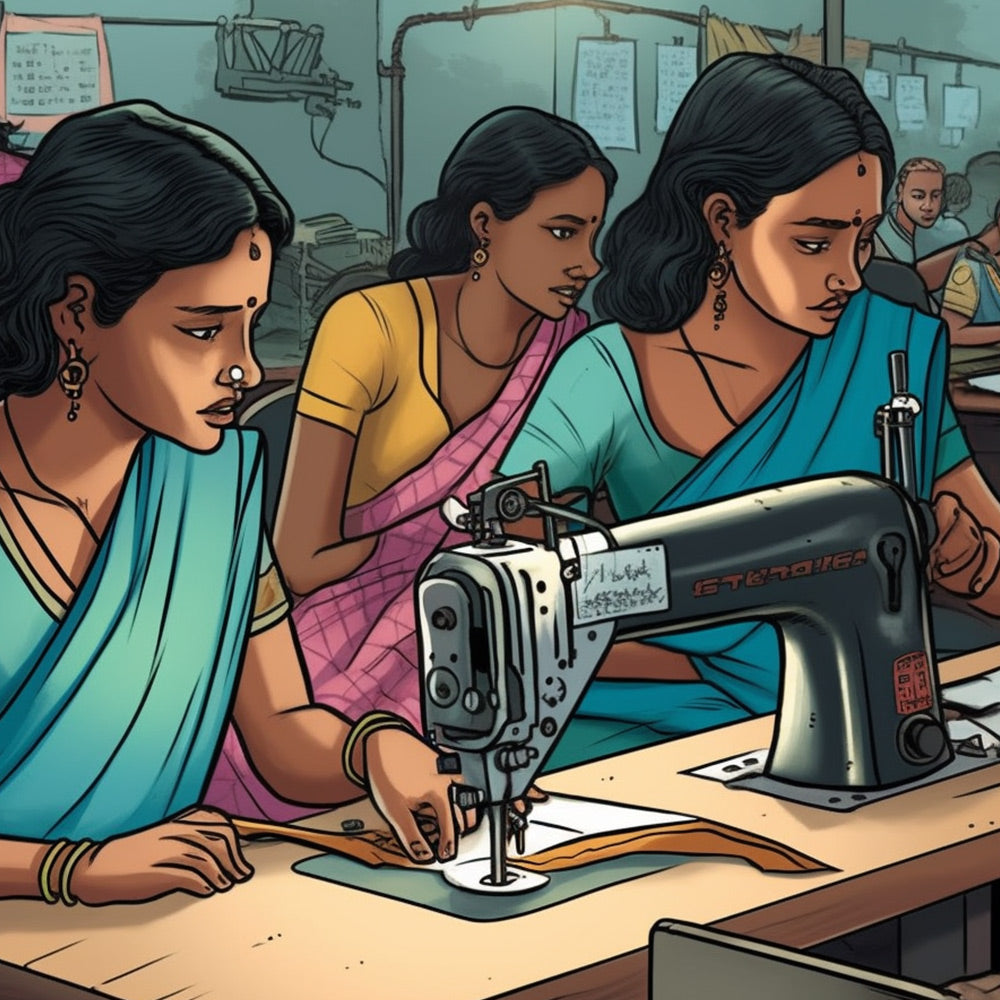

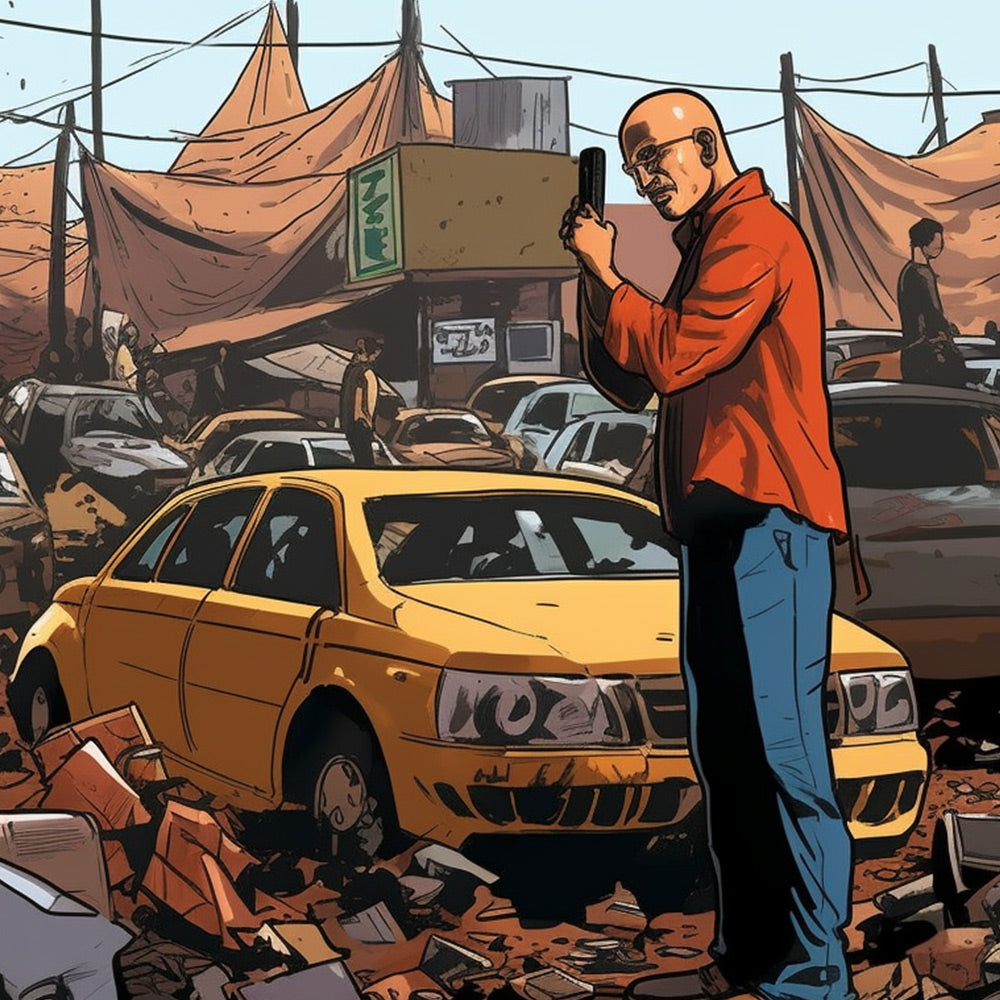
![Museum of Fade Mote One Backpack in EX-Cargo Belts & Rescued Car Seat Belts [15" Laptop Bag]](http://www.jaggerybags.com/cdn/shop/products/2_e69fbd46-7136-407e-89ec-37076187ac5c.jpg?v=1569286815&width=104)
![Heryana Freelancer's Satchel in Green Ex-Cargo Belts & Rescued Car Seat Belts [11" Cafe Bag]](http://www.jaggerybags.com/cdn/shop/products/2_f79d89e2-199c-4ae0-8d60-afbd0b1be087.jpg?v=1702500985&width=104)


![Museum of Fade Co-founder's Frontpack in Ex-Cargo Belts and Rescued Car Seat Belts [15" Laptop Bag]](http://www.jaggerybags.com/cdn/shop/products/2_0f8ba7db-dc12-4bf4-8605-7fde441d24b5.jpg?v=1633207665&width=104)
![Serially Circular Co-founder's Bag in Ex-Cargo Belts and Car Seat Belts [15" laptop bag]](http://www.jaggerybags.com/cdn/shop/products/2_abe88a09-0102-4c42-abd4-1bf23d1671a8.jpg?v=1586347349&width=104)
![Heryana Mini Co-founder's Satchel in Green Ex-Cargo Belts & Rescued Car Seat Belts [10" Cafe Bag]](http://www.jaggerybags.com/cdn/shop/products/MiniCofounder-front_aadc59d3-e390-4128-9dd8-0b971ea90ea0.png?v=1662365170&width=104)
